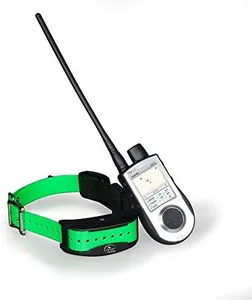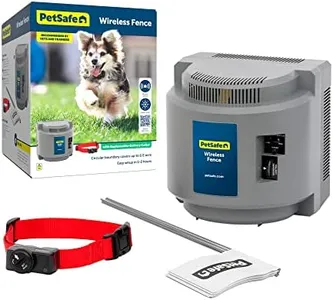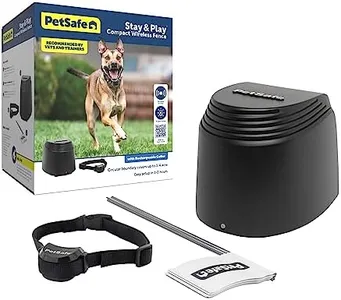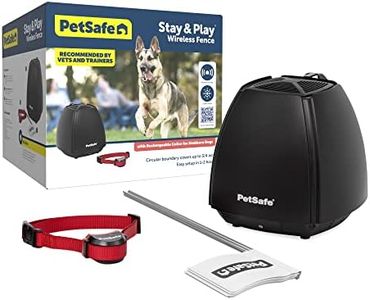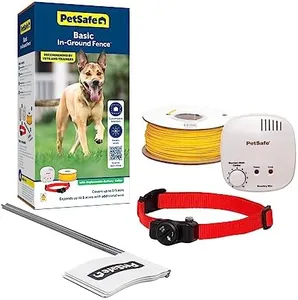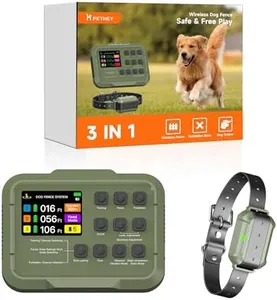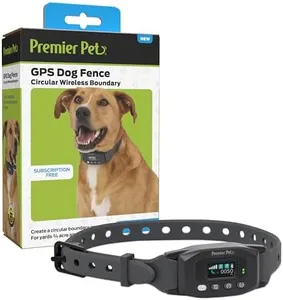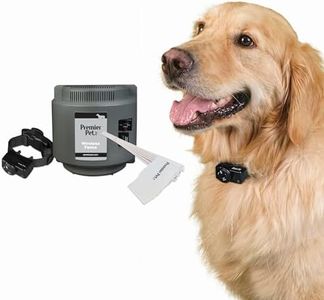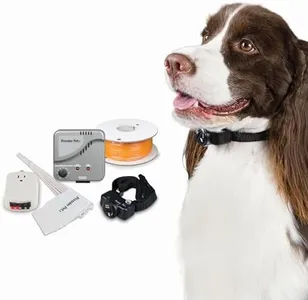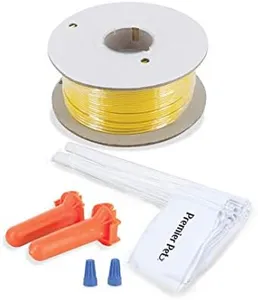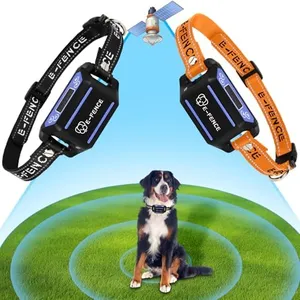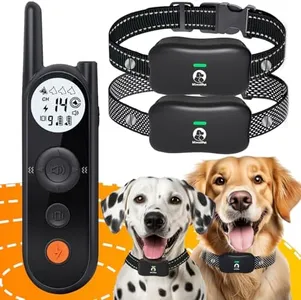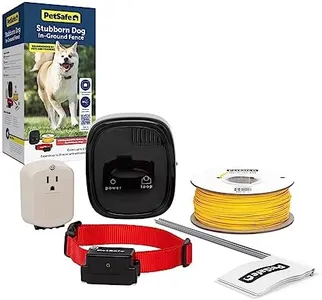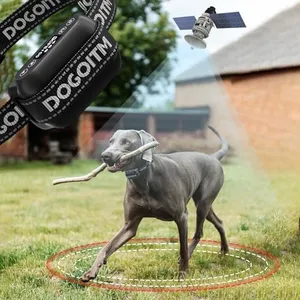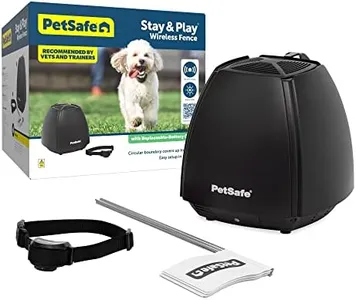We Use CookiesWe use cookies to enhance the security, performance,
functionality and for analytical and promotional activities. By continuing to browse this site you
are agreeing to our privacy policy
10 Best Dog Fence Systems 2025 in the United States
How do we rank products for you?
Our technology thoroughly searches through the online shopping world, reviewing hundreds of sites. We then process and analyze this information, updating in real-time to bring you the latest top-rated products. This way, you always get the best and most current options available.

Buying Guide for the Best Dog Fence Systems
Choosing the right dog fence system is crucial for ensuring the safety and security of your pet while giving them the freedom to roam within a designated area. When selecting a dog fence system, it's important to consider various factors such as the size of your property, the temperament of your dog, and the type of containment system that will work best for your needs. Here are some key specifications to consider when making your decision.Type of Fence SystemDog fence systems come in various types, including wireless, in-ground, and traditional physical fences. Wireless systems use a central transmitter to create a circular boundary, which is easy to set up but may not cover irregularly shaped areas. In-ground systems involve burying wires around the perimeter of your property, offering more flexibility in shaping the boundary but requiring more installation effort. Traditional physical fences provide a visible barrier but may not be suitable for all landscapes or budgets. Choose the type that best fits your property layout and your dog's behavior.
Coverage AreaThe coverage area refers to the maximum space that the dog fence system can enclose. This is important because it determines how much room your dog will have to roam. Coverage areas can range from small yards to several acres. For smaller properties, a system with a limited range will suffice, while larger properties will require a system with a more extensive coverage area. Consider the size of your yard and how much space your dog needs to be active and happy.
Dog Size and WeightDifferent dog fence systems are designed to accommodate various sizes and weights of dogs. This is important because the collar that your dog wears needs to be appropriate for their size to ensure comfort and effectiveness. Systems often specify the minimum and maximum weight limits for dogs. If you have a small dog, look for systems with lightweight collars. For larger dogs, ensure the collar is sturdy and can deliver the necessary correction level.
Correction LevelsCorrection levels refer to the intensity of the signal or static correction that the collar delivers when the dog approaches the boundary. This is important for training your dog to stay within the designated area. Systems typically offer multiple correction levels, allowing you to adjust the intensity based on your dog's temperament and training progress. Start with the lowest level and gradually increase if necessary. Ensure the system you choose has enough flexibility to cater to your dog's needs.
Battery Life and Power SourceThe battery life and power source of the collar and transmitter are crucial for the consistent operation of the dog fence system. Some collars use replaceable batteries, while others are rechargeable. Longer battery life means less frequent maintenance. Consider how often you are willing to change or recharge batteries. Additionally, check if the transmitter requires a constant power source or if it has backup options in case of power outages.
Ease of InstallationThe ease of installation varies between different dog fence systems. Wireless systems are generally easier to set up, requiring only the placement of the transmitter and fitting the collar on your dog. In-ground systems require more effort, as you need to bury the wires around your property. Consider your comfort level with DIY projects and the time you have available for installation. Choose a system that matches your willingness and ability to install it properly.
Durability and Weather ResistanceDurability and weather resistance are important factors to ensure the longevity of your dog fence system, especially if it will be exposed to the elements. Look for systems with weatherproof collars and transmitters that can withstand rain, snow, and extreme temperatures. This is particularly important if you live in an area with harsh weather conditions. A durable system will provide reliable performance and reduce the need for frequent replacements.
Most Popular Categories Right Now
